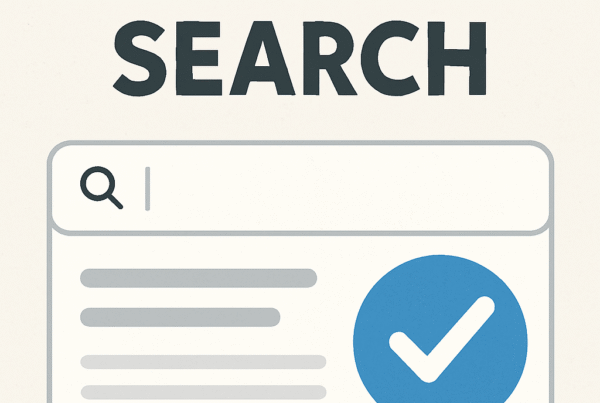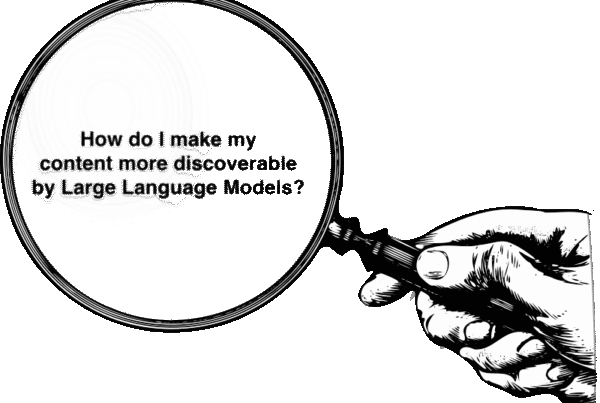The 2025 Omeda Idea Exchange (OX8) brought together leaders across the publishing world into a very informative fourm to share their perspectives on the most critical trends, risks, and opportunities facing the industry. This was Flexpress’ second year sponsoring and, just like last year, we wanted to share our point-of-view on the most important OX8 takeaways.
3 Key OX8 Takeaways:
- AI’s impact on search is changing the way publishers think about their businesses.
- Audience (and first-party data) needs to become publishers’ competitive advantage.
- Strategic AI applications in media are still nascent.
(To download our ebook, “Thriving in the Age of AI Search: A Guide for Media Publishers” please go to https://flexpressai.com/ox8/.)
Takeaway #1: AI’s impact on search is changing the way publishers think about their businesses.
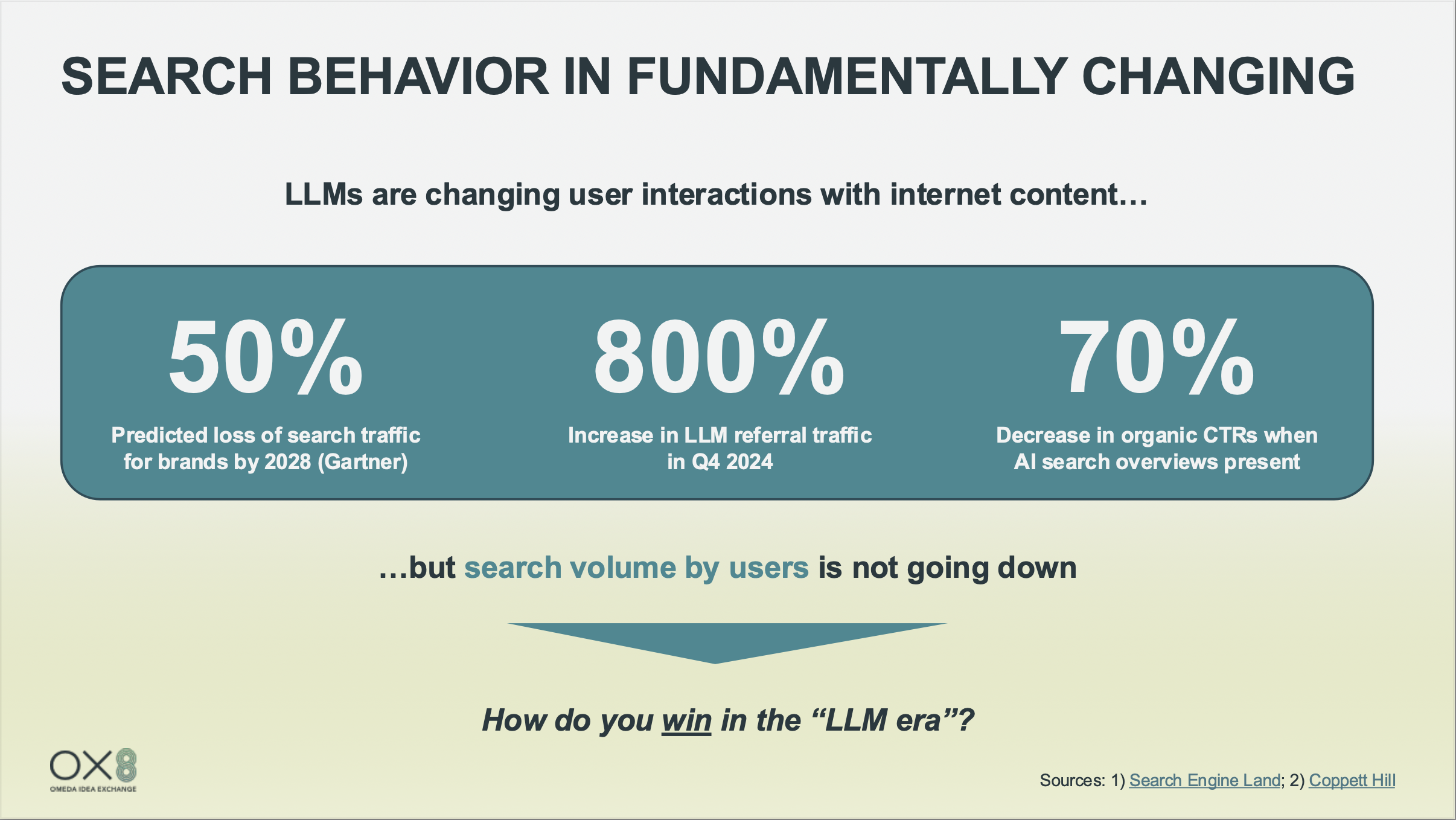
The above was the first slide of our CEO’s, Ajay Rayasam, presentation to the conference audience during our sponsor session. And this data bore out across many of the sessions and keynotes that we heard throughout the conference. (Note: You can see all of the slides in our presentation, “Grow and Engage Your Audience in the LLM Era: 8 Things You Can Do Now” here.) To wit:
- In the past year, the New York Post has lost ~40M users. (Not a typo.);
- During a roundtable discussion, representatives from BNP Media, Endeavor Media, and Fusable all reported traffic loses from organic search in the range of 20%-40%.
Omeda’s VP of Customer Experience, Tony Napoleone, shared similar sentiments in his keynote address on the state of the industry:
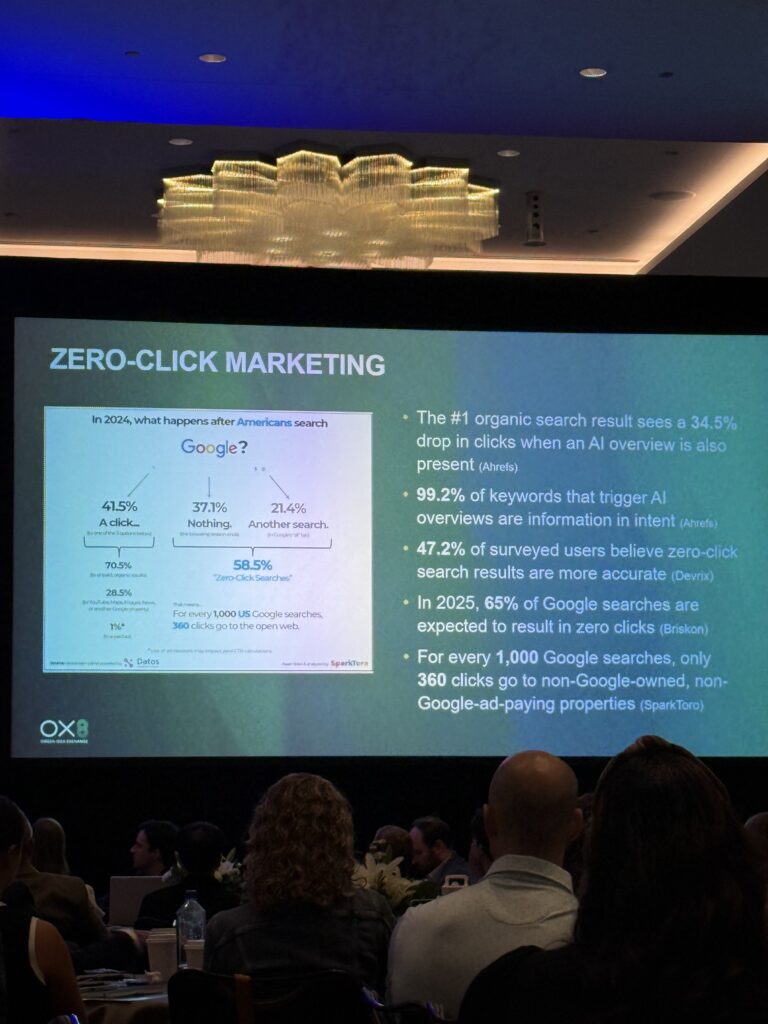
While many acknowledged that referral traffic is coming from AI sources such as ChatGPT, all resoundingly agreed that it is “not close to making up for the loss in search.”
But despite this headwind, many view the challenge as more of an opportunity. Unknown traffic is not really the traffic that you want; if you don’t understand your user, and cannot engage them in an ongoing fashion with data-informed actions, you’re simply renting an audience – and that’s not nearly as valuable. Despite the loss in search traffic, BNP’s known audience has grown 60% year-over-year. The New York Post has grown its revenue in the face of substantial user loss. While traffic, specifically page views, has always been the bellwether, that is fundamentally changing with the search landscape.
Another very poignant comment from the panel discussion came from Paul Daniel, the Director of Audience at Fusable. Paraphrasing: “I try to look at these challenges as opportunities. And generative search really makes you think about the utility of your content.” In the current climate, this POV is critical. To this point, content has been created for two audiences: human readers and search engines. Now, there is a third (AI/LLMs). How content is crafted has to take this into account, and specific strategies need to be developed on how (and what) content needs to appear in AI searches to remain relevant, trusted, and authoritative.
Takeaway #2: Audience (and first-party data) needs to become publishers’ competitive advantage.
If traffic is going to decrease, and known users/audience is going to become paramount to growth, capturing and actioning on first-party audience data will be critical to future success. We particularly found these insights, shared by Omeda, to perfectly capture this sentiment.
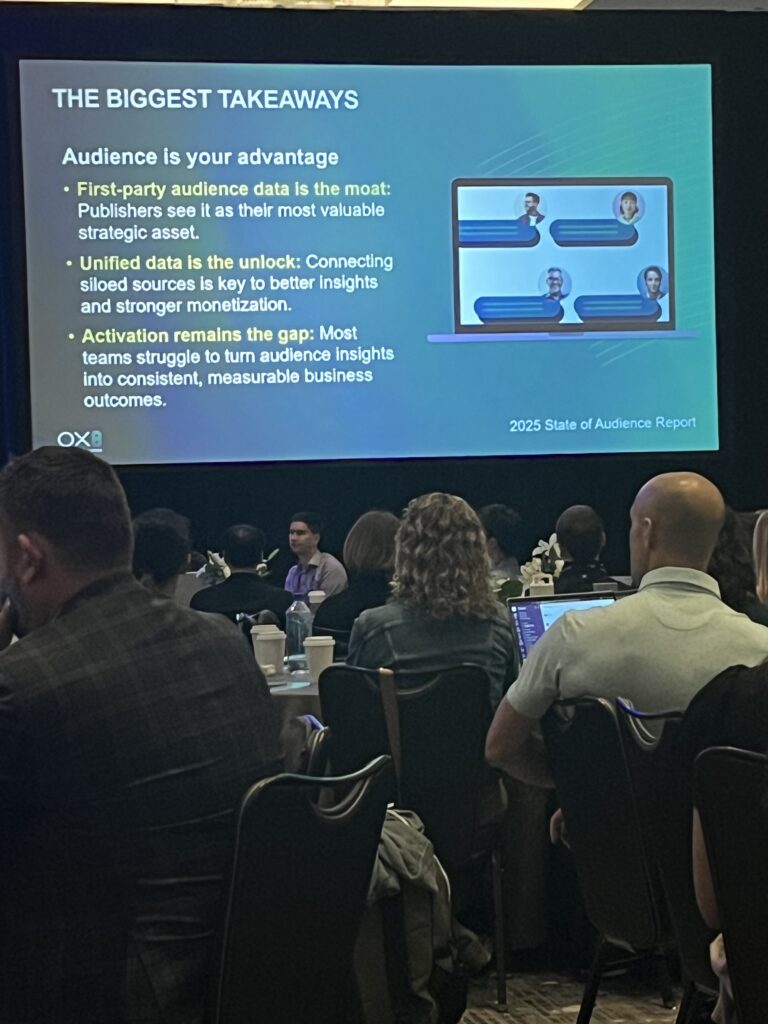
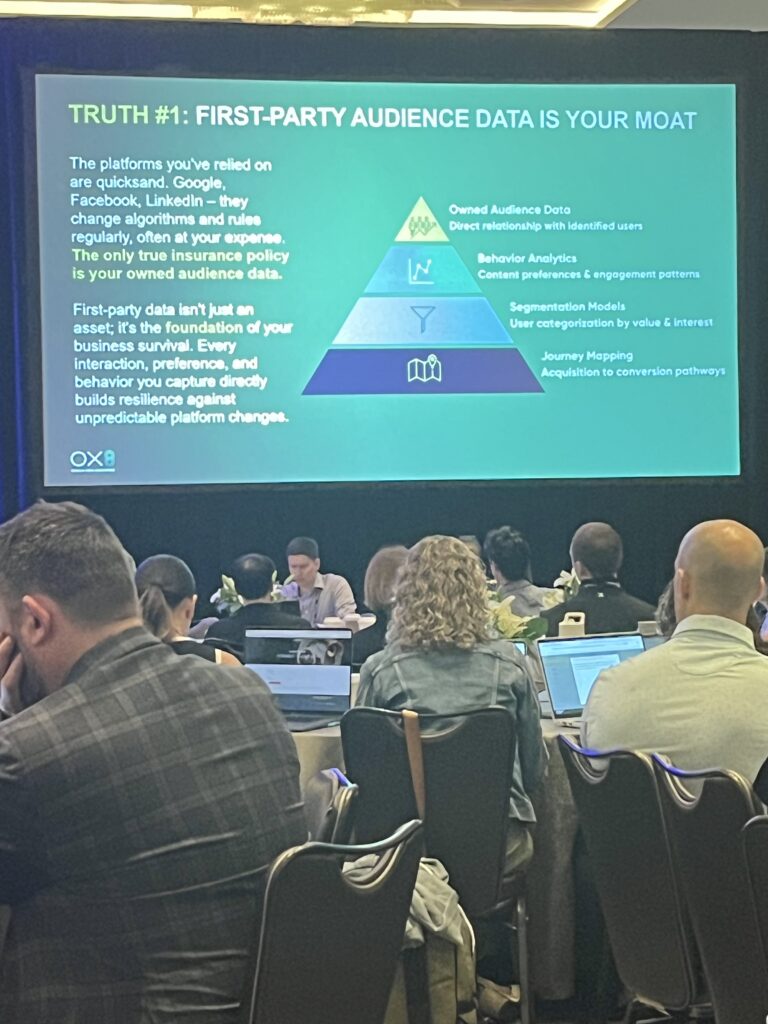
Our takeaway here is that the keys to turning audience (and first-party data) into a competitive advantage are unification and activation. There are more channels and tools to capture first-party data than ever before, but the persistent challenge has (and will always be) unifying this data into a single source of truth.
Once data is aggregated and centralized, it can only become an advantage if you can do something with it. The following data that Tony shared from Omeda’s 2025 State of Audience Report, underscores this well:
- Only 9% of surveyed publishers say they’re using audience data effectively;
- 66% of surveyed publishers are not using data for personalization or innovation.
This has been a persistent theme: in the age of Big Data, the issue is not the ability to get data that is the challenge. It’s bringing it together and then making it work for you that creates differentiation and success.
Takeaway #3: Strategic AI applications in media are still nascent.
Our final OX8 takeaway is geared towards the future. It is encouraging to see that the usage of AI is becoming more prevalent across media. As you can see from the below slide shared by Tony, 60% of teams Omeda surveyed are using AI and applying it to audience data.
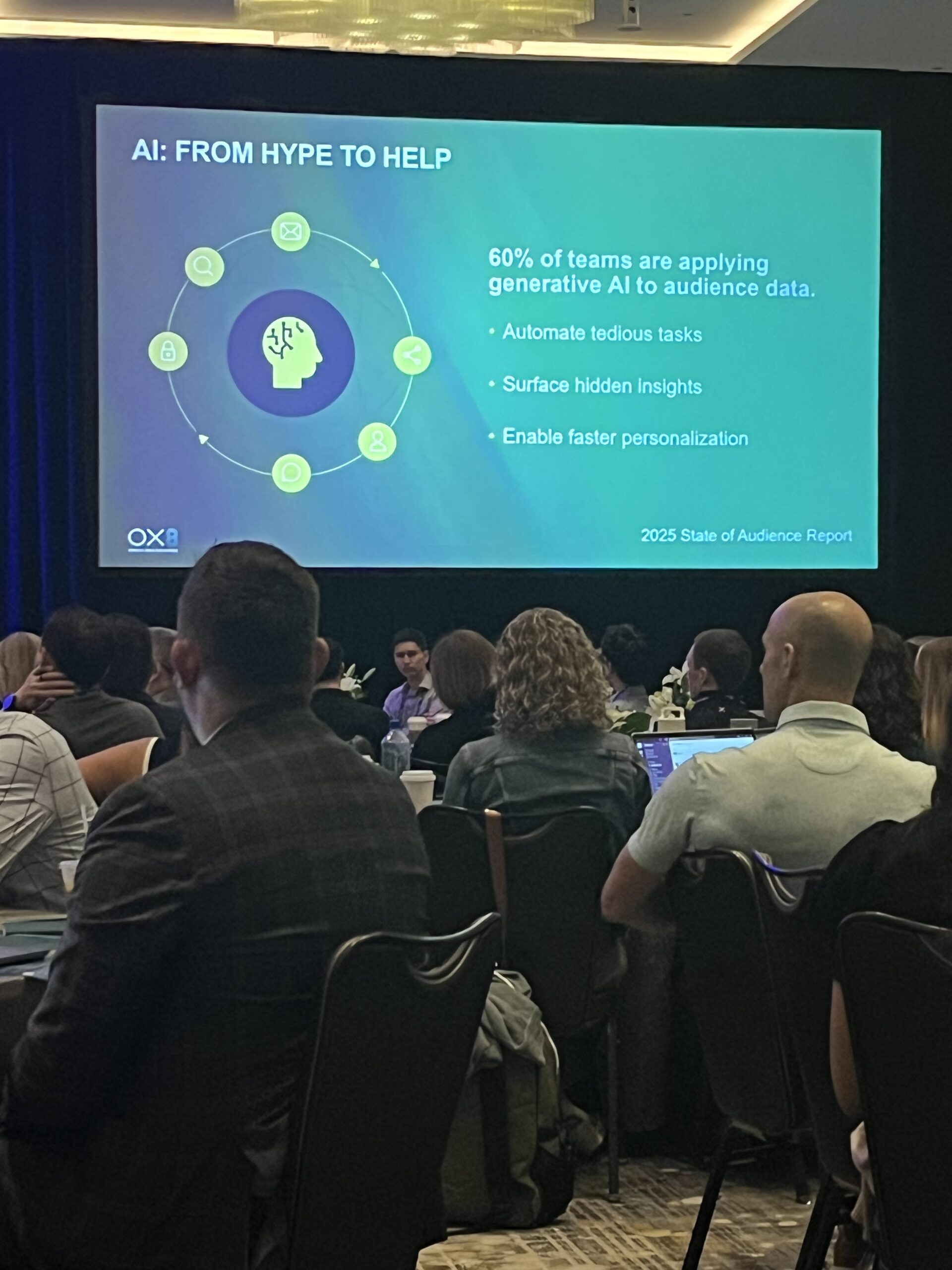
But what is clear is that current applications of AI focus primarily on workflows and efficiencies. From the majority of the folks we talked to, the most common use cases centered on the editorial process – headline and topic suggestions, tagging and SEO improvements, etc. – or streamlining internal processes such as data querying or analysis.
The bridge on AI’s use in discoverability and user experience/engagement have yet to be crossed. From talking to numerous companies at the show, these appear to be the new frontiers with the most promise – but also the least clarity. Will we live in a future world in which websites are essentially personalized for each user based on known audience and first-party data and/or what they are searching for on a site in a conversational query? No one is it quite sure. But what does seem certain is that it’s not as far-fetched as we once may have thought.
—
Interested in discussing your AI/LLM strategy, and improving the growth and performance of your website?
Feel free to contact us any time at hello@flexpressai.com or Contact Us here.



